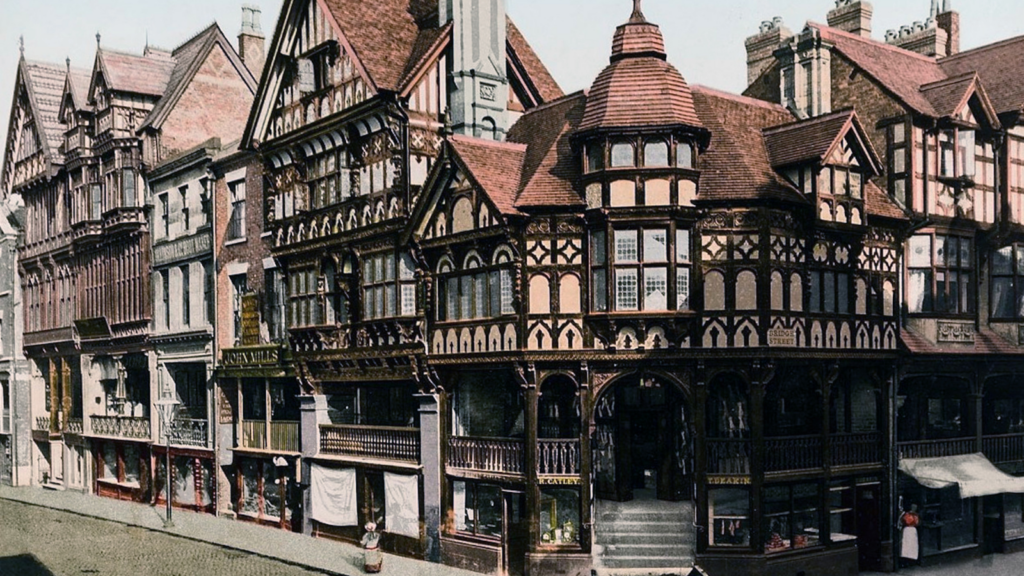Step back in time with us as we explore the fascinating period of 1920s architecture. It was a decade that saw a seismic shift in design, breaking away from traditional norms and embracing a new aesthetic that still resonates today.
This article will delve into the distinctive characteristics of 1920s architecture, its influential figures, and enduring legacy. So, get ready to journey into the past and discover the architectural gems that defined the Roaring Twenties.
1920s Architecture

The 1920s marked a significant divergence in architectural style. Transformative designs, representative of a new era, emerged in full force. Art Deco took center stage, exhibiting geometric shapes, symmetrical forms, and rich colors. Architecture became the emblem of a rapidly industrializing society, showcased in the grandeur of skyscrapers. Buildings no longer conformed to the conventional, instead embracing innovation in material usage such as steel, glass, and reinforced concrete. Key figures contributed to this architectural revolution, their impact resonating through decades. The 1920s architecture, in essence, etched a permanent mark on the canvas of global design.
Key Architectural Movements in the 1920s
In an era that experienced breathtaking changes, 1920s architecture saw revolutionary movements that redefined global design. Firstly, it’s the groundbreaking Art Deco, a movement that incorporated geometric shapes and vibrant colors into its designs. This evolution emphasized luxury and sophistication, making a striking departure from previous eras. Examples of Art Deco include the Empire State Building and the Chrysler Building, both iconic structures showcasing the intrigue of the 1920s architecture movement.

Secondly, the emergence of the International Style deserves mention. It celebrated functionality over aesthetics, showcasing an avant-garde blend of steel, glass, and reinforced concrete. The Villa Savoye, a classic example of International Style, became an architectural symbol of the 1920s.
Lastly, the Modernist movement marked this era, highlighting the break from traditional design forms. It favoured streamlined, stripped-back structures, and Walter Gropius’s Fagus Factory is a notable illustration of this approach.
Notable Architectural Projects of the 1920s
The roaring twenties presented remarkable architectural projects, epitomizing the distinctiveness of 1920s architecture. Structures resonated with the vibrancy of Art Deco, clear-cut lines of the International Style, or the simplicity of Modernism, magnifying the transformative period. Notably, the Empire State Building and Chrysler Building manifested Art Deco’s geometric grandeur, while Villa Savoye represented the utilitarian grace of the International Style. The Fagus Factory, exemplifying Modernism, boasted streamlined design. Through these edifices, the 1920s yielded practical yet visually striking embodiments of architectural innovation.
Impact of 1920s Architecture on Modern Designs
1920s architecture has significantly influenced contemporary design trends. Many of today’s popular architectural practices stand testament to elements from Art Deco, International Style, and Modernism, each born in the 1920s. Essentially, they have dictated the trajectory of modern architectural principles. These styles, filled with geometric shapes, vibrant colors, and a blend of practicality and visual appeal, have inspired a wealth of buildings worldwide.

Mind-blowing structures like the Empire State Building and Chrysler Building introduced a new era of skyscrapers, echoing Art Deco’s grandiosity. In fact, many high-rise buildings today adopt similar concepts, coursing with bold lines and outstanding symmetry.
The International Style’s influence is epitomized by the use of steel and glass in many of today’s buildings. The Villa Savoye underscores the switch to functionality over ornamentals, a facet echoed in today’s minimalist design trends.
The Fagus Factory heralds Modernism’s streamlined aesthetics and removes the unessential to promote efficiency. This simplicity finds its echoes in the reduced forms and monochromatic palette of many modern structures.
A Shift in Design that Remains Today
The 1920s saw a seismic shift in architectural design that continues to reverberate in today’s structures. The bold geometric forms and vibrant hues of Art Deco still inspire the grandeur of modern high-rises, while the International Style’s emphasis on functionality remains a cornerstone of contemporary design. The era’s Modernist structures, with their pared-down aesthetics, prefigured the minimalist trends we see today. Indeed, the architectural innovations of the 1920s didn’t just shape the skyline of the era – they’ve left an indelible mark on the world of design, influencing the way we build and perceive structures even a century later.
